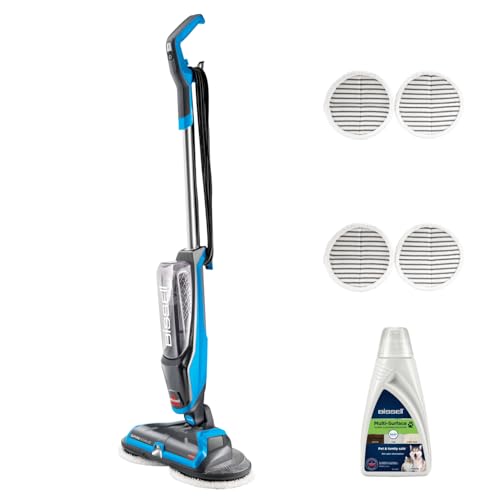




Mould can be a common problem in many homes, especially in areas with high humidity or poor ventilation. One area that can be particularly susceptible to mould growth is curtains. Curtains can easily collect moisture and become a breeding ground for mould spores, which can not only cause damage to the curtains but also pose a health risk to you and your family. However, there are effective techniques that can help you get mould out of curtains and prevent it from coming back.
One of the first steps in getting mould out of curtains is to identify the extent of the problem. Inspect your curtains carefully for any signs of mould growth, such as black or green spots or a musty odour. If you notice any mould, it’s important to take immediate action to prevent it from spreading further.
One effective technique for removing mould from curtains is to wash them using a mixture of vinegar and water. Create a solution by mixing equal parts of white vinegar and water. Soak the curtains in this solution for at least an hour, then wash them in the washing machine using a mild detergent. Hang the curtains to dry in direct sunlight, as sunlight helps kill mould spores. Make sure the curtains are completely dry before rehanging them.
Another technique is to use a commercial mould and mildew cleaner. There are many products available on the market that are specifically designed to remove mould and mildew. Follow the instructions on the product carefully and apply it to the affected areas of the curtains. Use a scrub brush or sponge to gently scrub away the mould, then rinse the curtains thoroughly. Again, ensure that the curtains are completely dry before rehanging them.
Prevention is also key in keeping mould out of curtains. Ensure that your home has adequate ventilation by opening windows or using dehumidifiers. Avoid hanging wet or damp curtains, as this can promote mould growth. Regularly clean your curtains by vacuuming or shaking them outside, and wash them periodically to prevent mould from taking hold.
By following these effective techniques, you can get mould out of curtains and keep your home safe and healthy. Remember to always wear protective gloves and a mask when dealing with mould, as it can be harmful to your health. Don’t ignore the presence of mould on your curtains, as it can spread and cause further damage. Take action promptly to eliminate mould and prevent it from returning.
Overview of Mould Removal from Curtains
Introduction
Mould is a common problem for many households, and curtains are often one of the most affected areas. When mould starts to grow on curtains, it not only affects their appearance but can also lead to health issues. Therefore, it is important to address the issue of mould on curtains promptly and effectively.
Causes of Mould on Curtains
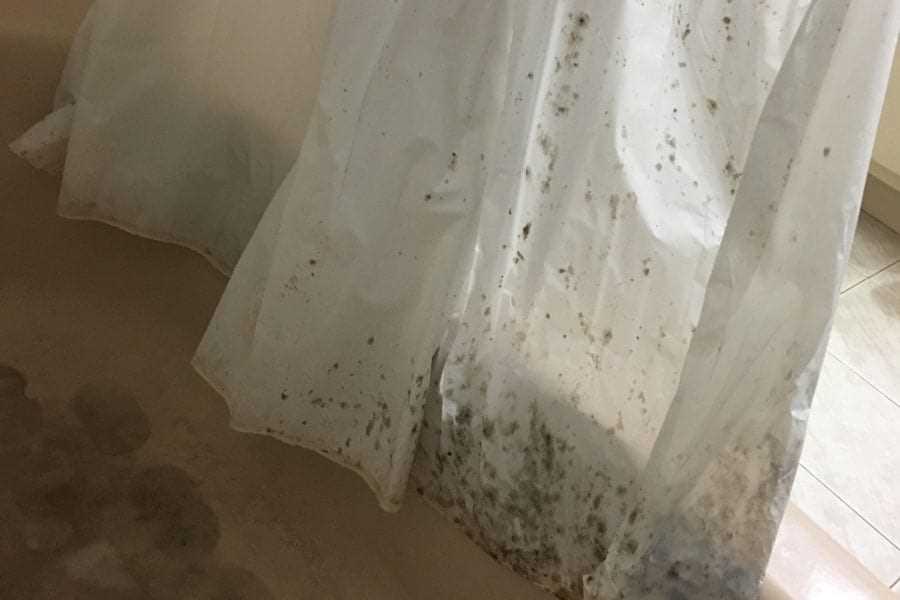
Mould on curtains usually occurs due to excessive moisture and improper ventilation. Humid environments, poor air circulation, and lack of sunlight can create an ideal breeding ground for mould spores to develop and thrive. Additionally, curtains in rooms with high humidity levels, such as bathrooms or kitchens, are particularly susceptible to mould growth.
Health Risks of Mould on Curtains
Mould on curtains can pose several health risks, especially for individuals with respiratory conditions, allergies, or weakened immune systems. Exposure to mould spores can lead to symptoms such as coughing, sneezing, itchy eyes, and skin irritation. Prolonged exposure to mould can even cause more severe health problems, such as asthma attacks or respiratory infections.
Effective Mould Removal Techniques for Curtains
There are several effective techniques for removing mould from curtains:
- Dry brushing: Start by dry brushing the affected areas of the curtain to remove visible mould spores.
- Vacuuming: Use a vacuum cleaner with a brush attachment to remove any remaining mould spores from the curtain surface.
- Washing: Wash the curtains in hot water with a detergent that contains antifungal properties. This will help kill any remaining mould and remove stains.
- Sun drying: Hang the curtains in direct sunlight to dry, as sunlight helps in killing mould spores.
Preventing Future Mould Growth
Once the mould has been successfully removed from curtains, it is important to take preventive measures to avoid future mould growth:
- Proper ventilation: Ensure that the room where the curtains are located has proper ventilation and air circulation.
- Reducing moisture: Keep the room humidity levels in check by using a dehumidifier or opening windows when possible.
- Regular cleaning: Regularly clean curtains, especially in high humidity areas, to prevent the accumulation of dust, dirt, and moisture.
- Using mould-resistant curtains: Consider using curtains made from mould-resistant materials to minimize the chances of mould growth.
Conclusion
Mould removal from curtains is essential not only for improving the appearance of the curtains but also for maintaining a healthy indoor environment. By following the effective mould removal techniques and implementing preventive measures, you can keep your curtains mould-free and ensure a clean and safe living space.
Identify the Affected Areas

Before you can effectively remove mould from your curtains, it’s important to identify the areas that are affected. Mould tends to thrive in damp and dark environments, so curtains placed near windows or in humid rooms are more likely to develop mould.
Start by inspecting your curtains closely. Look for any visible signs of mould, such as black or dark green spots. These spots may appear fuzzy or slimy. Additionally, check for any musty smells coming from the curtains, as this can be an indication of mould growth.
Once you’ve located the affected areas, it’s important to take immediate action to prevent the further spread of mould. This includes removing the curtains from the affected areas and isolating them until they can be properly cleaned and treated.
Remove the Curtains for Cleaning
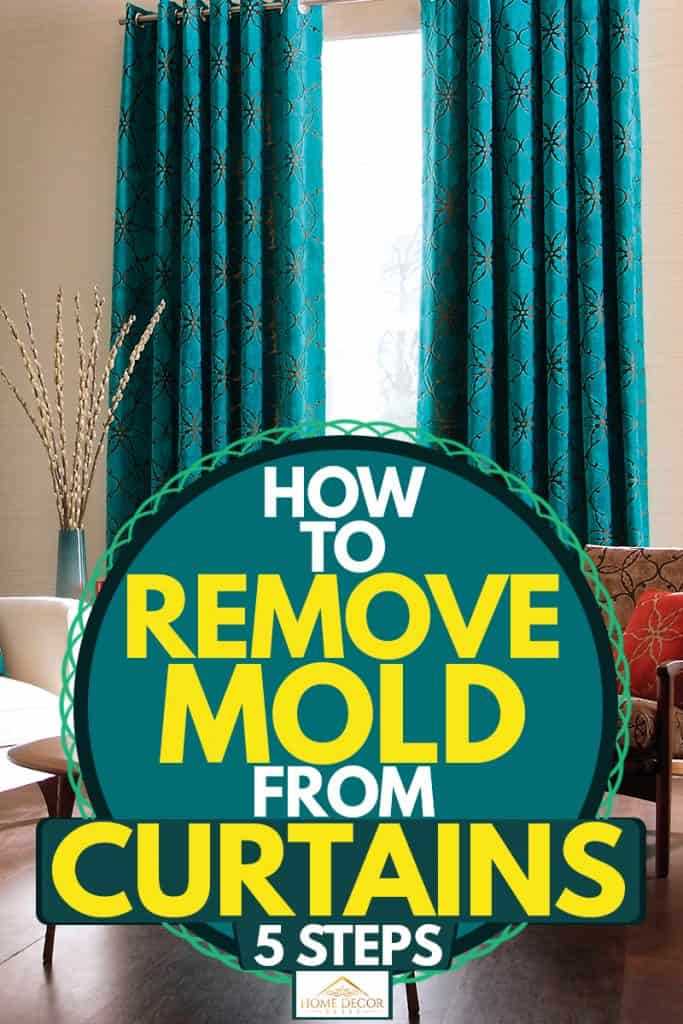
To effectively remove mould from your curtains, it is recommended to take them down and clean them separately. This will allow for a more thorough cleaning process and ensure that no mould spores are left behind.
1. Remove the curtains: Start by taking down the curtains from the rod or track. Carefully remove any hooks or attachments that are holding the curtains in place.
2. Shake off loose mould: Once the curtains are removed, take them outside and gently shake them to remove any loose mould spores. This step will help to minimize the spread of mould during the cleaning process.
3. Vacuum the curtains: Use a vacuum cleaner with a brush attachment to carefully vacuum both sides of the curtains. Pay extra attention to the areas where mould is visible or heavily concentrated.
4. Pre-treat the mould: Before washing the curtains, it is recommended to pre-treat any mould stains. Create a mixture of equal parts white vinegar and water and apply it directly to the affected areas. Allow the solution to sit for 15-30 minutes to help break down the mould.
5. Wash the curtains: After pre-treating the mould stains, follow the care instructions provided by the manufacturer and wash the curtains accordingly. Use a mild detergent and set the washing machine to a gentle cycle. Avoid using bleach, as it may damage the fabric.
6. Dry the curtains: Once the curtains have been washed, hang them in a well-ventilated area or use a clothesline to air dry them. Avoid using a dryer, as excessive heat may shrink or damage the fabric.
7. Iron or steam the curtains: After the curtains are dry, you may choose to iron or steam them to remove any wrinkles or folds. Follow the care instructions for ironing or steaming to avoid damaging the fabric.
8. Rehang the curtains: Once the curtains are clean and dry, reattach any hooks or attachments and hang them back on the rod or track. Ensure that the curtains are properly aligned and draped before securing them in place.
By following these steps, you can effectively remove mould from your curtains and restore them to their original condition. Remember to take proper precautions, such as wearing gloves and a mask, when dealing with mould to protect your health.
Pre-treat the Mould Stains
Mould stains can be stubborn and difficult to remove, but pre-treating them before washing your curtains can help to break down the mould and make it easier to remove. Here are some effective pre-treatment techniques:
1. White Vinegar
White vinegar is a natural cleaning agent that can help to kill mould and remove stains. Mix equal parts of white vinegar and water in a spray bottle. Spray the solution onto the mould stains on your curtains and let it sit for about an hour. Then, scrub the stains gently with a soft brush or cloth. Rinse the curtains thoroughly with water before washing them.
2. Hydrogen Peroxide
Hydrogen peroxide is another effective cleaner for mould stains. Mix one part hydrogen peroxide with two parts water in a spray bottle. Spray the solution onto the mould stains and let it sit for 10-15 minutes. Scrub the stains gently with a brush or cloth, and then rinse the curtains with water.
3. Baking Soda
Baking soda is a versatile cleaning agent that can also help to remove mould stains. Create a paste by mixing baking soda with water, and then apply the paste directly onto the stains. Let it sit for a few hours or overnight. Scrub the stains gently with a brush or cloth, and then rinse the curtains thoroughly.
4. Lemon Juice
Lemon juice is a natural bleaching agent and can help to lighten mould stains on your curtains. Squeeze fresh lemon juice onto the stains and let it sit for about 30 minutes. Scrub the stains gently with a brush or cloth, and then rinse the curtains with water.
5. Commercial Stain Removers
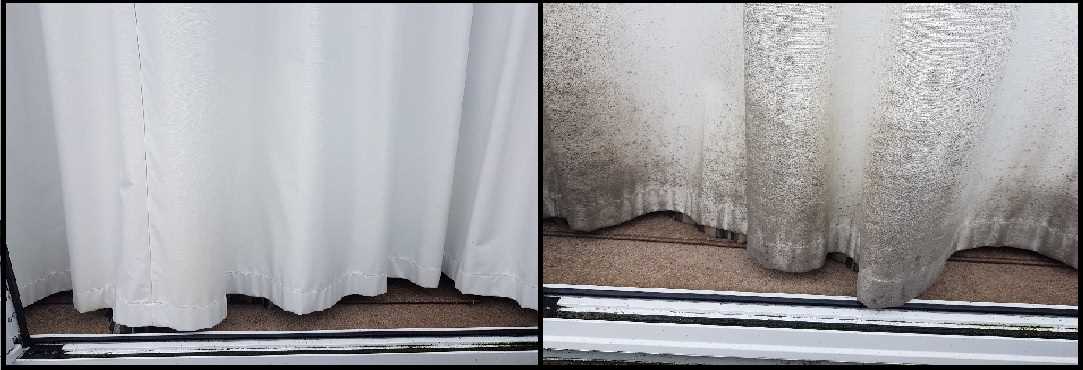
If the mould stains are stubborn and the above methods don’t work, you can try using a commercial stain remover specifically designed for mould and mildew. Follow the instructions on the product label and make sure to spot test on a small, inconspicuous area of your curtains before applying it to the entire stain.
By pre-treating the mould stains on your curtains, you can effectively break down the mould and make it easier to remove during the washing process. Remember to always check the care instructions for your curtains before attempting any cleaning methods to ensure that you don’t cause any damage.
Use Natural or Chemical Cleaning Agents
Natural Cleaning Agents
Using natural cleaning agents is a safe and eco-friendly option for removing mould from curtains. Some effective natural options include:
- Vinegar: Mix equal parts white vinegar and water in a spray bottle. Spray the mixture onto the mouldy areas of the curtains and let it sit for a few minutes. Then, wipe away the vinegar with a clean cloth.
- Lemon juice: Squeeze fresh lemon juice onto the mouldy areas of the curtains and let it sit for about 10 minutes. Rinse with warm water and pat dry.
- Baking soda: Sprinkle baking soda onto the mouldy areas and let it sit for a few hours. Vacuum the baking soda off the curtains.
- Tea tree oil: Mix a few drops of tea tree oil with water in a spray bottle. Spray onto the mouldy areas and leave it on for a few hours. Wipe away with a clean cloth.
Chemical Cleaning Agents
If natural cleaning agents are not effective, you can turn to chemical cleaning agents. Some popular options include:
- Bleach: Mix one part bleach with three parts water in a spray bottle. Spray onto the mouldy areas and let it sit for a few minutes before rinsing with water. Be sure to wear gloves and work in a well-ventilated area when using bleach.
- Hydrogen peroxide: Spray 3% hydrogen peroxide directly onto the mouldy areas and let it sit for about 10 minutes. Rinse with water and pat dry.
- Commercial mould and mildew cleaners: There are various commercial cleaners available specifically designed to remove mould and mildew. Follow the instructions on the product label for best results.
When using chemical cleaning agents, always follow the instructions on the packaging and take necessary precautions to protect yourself and your surroundings.
Prevent Future Mould Growth
Mould growth on curtains can be a recurring problem if the underlying causes are not addressed. Here are some steps you can take to prevent future mould growth:
1. Adequate Ventilation
Ensure that the area where the curtains are located is properly ventilated. Good air circulation helps to prevent moisture buildup, which can lead to mould growth. Open windows or use a fan to promote airflow in the room.
2. Reduce Humidity
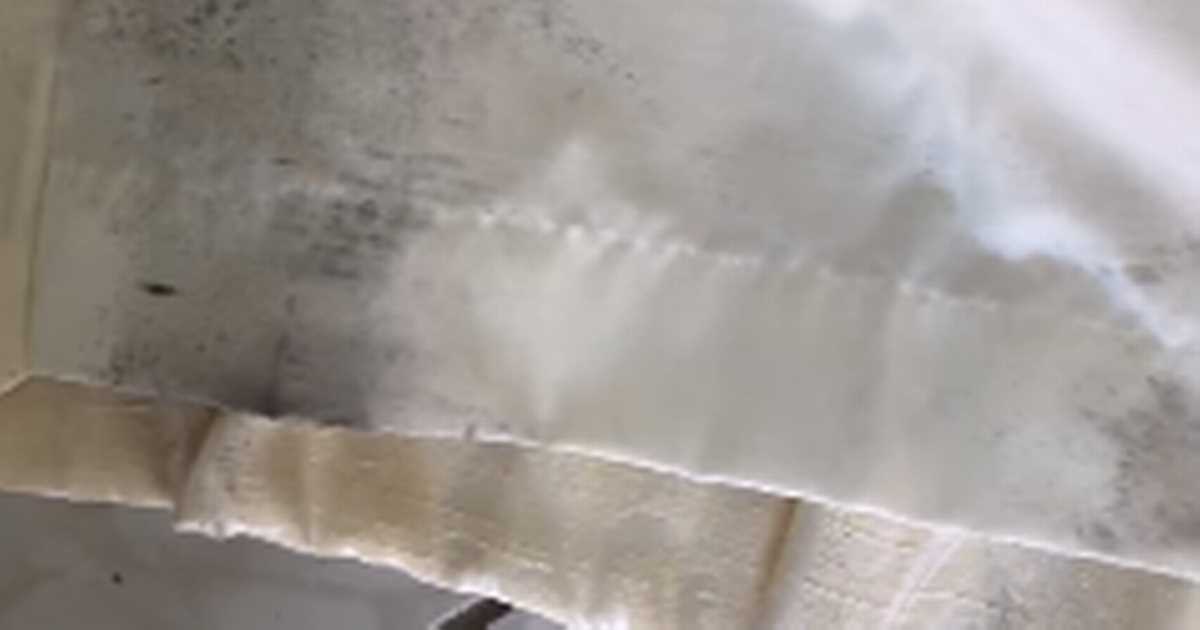
High humidity levels can contribute to mould growth. Use a dehumidifier in rooms with excessive moisture or invest in moisture-absorbing products like silica gel packets. Keep indoor humidity levels between 30% and 50% to discourage mould growth.
3. Dry Curtains Thoroughly
After washing your curtains, ensure they are completely dry before hanging them back up. Moisture left on the fabric can create an ideal environment for mould to grow. Hang the curtains in a well-ventilated area or use a dryer to expedite the drying process.
4. Regular Cleaning
Regularly clean and vacuum the curtains to remove dust, dirt, and any potential mould spores. This will help prevent mould from establishing itself on the fabric.
5. Avoid Storing Damp Curtains
Never store damp curtains, as this can promote mould growth. If you need to store your curtains, ensure they are completely dry before packing them away in a breathable bag or container.
6. Monitor Moisture Levels
Keep an eye on moisture levels in your home, especially in rooms where curtains are prone to mould growth. Use a hygrometer to measure humidity levels and take necessary actions if they rise above the recommended range.
7. Regularly Inspect for Leaks
Check for water leaks in the areas near your curtains, such as windows or pipes. If you detect any leaks, fix them promptly to prevent moisture buildup and potential mould growth.
8. Use Antimicrobial Treatments
Consider using antimicrobial treatments on your curtains to inhibit mould growth. These treatments can be applied after cleaning and drying the curtains and are designed to prevent the growth of mould and bacteria on fabrics.
9. Store Curtains Properly
If you need to remove the curtains temporarily, fold them and store them in a well-ventilated area. Avoid storing them in damp basements or places where moisture can accumulate.
By following these tips, you can effectively prevent future mould growth on your curtains and maintain a clean and healthy living environment.
FAQ
What are some effective techniques for removing mould from curtains?
There are several effective techniques for removing mould from curtains. One method is to mix equal parts of white vinegar and water in a spray bottle and then spray the affected areas of the curtains. Let the vinegar solution sit on the curtains for a few hours, then rinse with water and wash the curtains as usual. Another technique is to make a paste using baking soda and water, apply it to the mouldy areas, and let it sit for a few hours before washing the curtains. Additionally, you can try using hydrogen peroxide or a mix of lemon juice and salt to remove mould stains from curtains.
Can I use bleach to remove mould from curtains?
Bleach can be effective in removing mould from curtains, but it should be used with caution. Before using bleach, test it on a small, inconspicuous area of the curtains to make sure it doesn’t cause any damage or discolouration. If the curtains can withstand bleach, you can mix one part bleach with three parts water and apply it to the mouldy areas using a sponge or cloth. Allow the bleach solution to sit on the curtains for a few minutes, then rinse thoroughly and wash the curtains as usual. However, it’s important to keep in mind that bleach may weaken the fabric, so this method should be used sparingly.
Are there any natural remedies for removing mould from curtains?
Yes, there are several natural remedies for removing mould from curtains. One option is to mix equal parts of white vinegar and water in a spray bottle and spray the affected areas of the curtains. Vinegar is known for its antimicrobial properties and can help kill mould. Another natural remedy is to make a paste using baking soda and water, apply it to the mouldy areas, and let it sit for a few hours before washing the curtains. Additionally, you can try using a mix of lemon juice and salt to remove mould stains from curtains.
What precautions should I take when removing mould from curtains?
When removing mould from curtains, it’s important to take proper precautions to protect yourself and prevent the spread of mould spores. Wear gloves, a mask, and protective eyewear to avoid direct contact with mould and potential allergens. Before removing the curtains, vacuum them with a HEPA-filtered vacuum cleaner to minimize the release of spores. If possible, remove the curtains outdoors to prevent the spores from spreading inside the house. Clean the affected areas thoroughly, and avoid using brushes or tools that can release spores into the air. After removing the mould, wash your hands and clean any tools or surfaces that came into contact with the mould.
Can I prevent mould from growing on curtains?
Yes, there are several measures you can take to prevent mould from growing on curtains. Firstly, ensure that the curtains are dry before closing them or folding them up. Moisture can contribute to the growth of mould, so it’s important to keep the curtains dry. If the curtains get wet, make sure to dry them thoroughly as soon as possible. You can also use a dehumidifier or open windows to improve ventilation and reduce moisture in the room. Regularly cleaning and dusting the curtains can also help prevent mould growth. If you notice any mould or mildew spots on the curtains, address them promptly to prevent further growth.
Can mouldy curtains be salvaged?
In some cases, mouldy curtains can be salvaged, especially if the mould is surface-level and hasn’t deeply penetrated the fabric. If the curtains are machine washable, you can try washing them with hot water and a laundry detergent that has antimicrobial properties. Additionally, you can use one of the effective techniques mentioned earlier, such as using vinegar or baking soda, to treat the mouldy areas before washing the curtains. However, if the mould is extensive or the curtains are made of delicate or non-washable fabric, it may be best to consult a professional cleaner or consider replacing the curtains.






